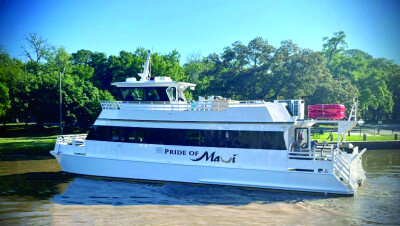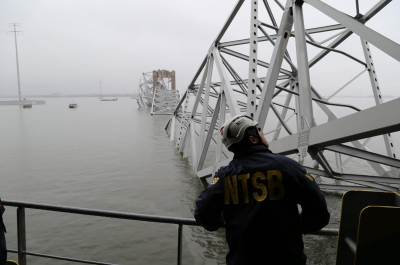By Michael N. Hansen, president, Hawaii Shippers' Council
The Hawaii media covered with great fuss the introduction of nine ferry-related bills in the state Legislature’s 2016 regular session, which began on Jan. 20. Fifty days later and halfway through the session only one bill remained under consideration.
Much of the widespread interest and emotion over a ferry service arises from the saga of the Hawaii Superferry whose interisland service ended in bankruptcy in 2009 amidst a flurry of allegations from environmental activists and robust support from small business and the public.
The remaining bill – Senate Bill 2618 – would direct and fund the Hawaii State Department of Transportation (HSDOT) to conduct an interisland ferry service feasibility study and submit their report to Legislature for the 2017 session. It names six specific terms of reference for the proposed study and purposefully left the funding amount unstated.
The measure was approved by the state Senate, on March 8 crossed over to the House, and on April 1 House committees on finance recommended that the measure be passed with amendments .
The Hawaii Shippers’ Council (HSC) submitted testimony to Senate committees identifying issues that should be addressed by the study. They include:
• Public vs. Commercial Service. The bill anticipates a state government-owned and -operated service. HSC recommended identifying the most promising operating model and subsequently seek a private operator through a tender process.
• Modeling Comparisons: Domestic vs. International Services. The bill calls for modeling the prospective interisland ferry after the Alaska Marine Highway System and Washington State Ferries. HSC recommended also considering commercially successful privately operated oceangoing ferry services elsewhere in the world.
• Vessel Type: Fast vs. Conventional Ferry. HSC recommended explicitly requiring the study to determine whether a fast ferry (e.g., Hawaii Superferry) or a conventional ferry (e.g., European Ro/Pax ferry) would be best suited.
• Jones Act: Exemption vs. Compliance – HSC recommended consideration of an exemption allowing a foreign owner to operate foreign-built ferries as U.S. flag as does Norwegian Cruise Lines (NCL) with its foreign-built U.S.-flag cruise ship Pride of America.
• Route Structure: All Islands vs. Selected Routes. HSC recommended those route(s) that can support daily commercial ferry service be positively identified as opposed to a blanket requirement all islands be served.
• Hawaii Water Carriers Act of 1972. HSC recommended an exemption for a commercial ferry operator from amendments subsequent to the Hawaii Superferry failure, which place unrealistic burdens on a new entrant common carrier.
• Hawaii Environmental Policy Act (HEPA). The Hawaii State Supreme Court found minor state harbor improvements on Maui triggered the need for an Environmental Impact Statement (EIS) covering the operation of the Hawaii Superferry, which was the proximate cause of the company’s bankruptcy. HSC recommended workable solution.
• Harbor Facilities. HSC recommended a commercial ferry operator should not be expected to fund state harbor improvements upfront, as was the case with Hawaii Superferry.
• Study Cost. The bill doesn’t specify a funding amount. HSC contacted several experts to obtain rough indications, which totaled from $350,000 to 555,000 for a study.
---
Michael N. Hansen is the president of the Hawaii Shippers’ Council, a business league organization incorporated in 1997 to represent cargo interests – known as “shippers” – who tender goods for shipment in the Hawaii trade.
The views and opinions expressed in this blog are the author's and not necessarily those of WorkBoat.




